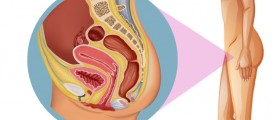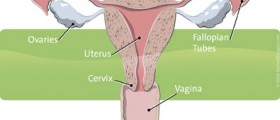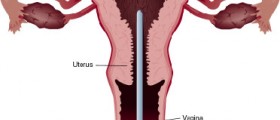Clear fluid discharge from the vagina is an alarming condition. People tend to give various and often faulty explanations for the condition. There is a lot of incorrect information floating around the internet also. Therefore it is essential to have a clear idea of the possible differential diagnoses, in order to have fewer doubts, fewer medical expenses and a happier life.
A huge number of conditions cause watery vaginal discharge or clear discharge.
It is therefore better to consult your gynecologist in cases of any worrisome symptoms.
Young girls may experience watery discharge related to periods due to infections, anovulatory cycles and obesity.

Young girls
Infections are common among young girls, especially those who are sexually active. Candida and Trichomonas are such organisms. A high vaginal swab culture and microscopy give a definitive diagnosis. Anti-fungal and antibiotic creams applied locally settle the matter.
Anovulatory cycles are menstrual cycles without ovulation. The ovum continues to form estrogen long past the middle of the cycle in anovulatory cycles. Obese individuals have a high content of fatty tissue. These adipocytes can convert the compound androstenedione to estrogen. A high estrogen content leads to endometrial hyperplasia and vaginal mucosal stimulation. There may be excess production of fluid exudate from these hyper-stimulated tissues.
Women of reproductive age
Women in the reproductive age group may have a condition called cervical ectropion. The cervix of the uterus can be divided into two parts; the ecto-cervix and the endo-cervix. There is a transitional zone between the two. During periods, due to the effect of estrogens, the transitional zone is exposed to the outside. This is called cervical ectropion. This leads to a mild irritation and inflammation. The result is a fluid exudate that may flow out of the vagina as a clear fluidic discharge.
Perimenopause
The perimenopausal period is another critical time period where thorough investigation of clear vaginal discharge is necessary. When a woman reaches the menopause, the estrogen stimulation of the reproductive tract slowly declines. Some women react to this withdrawal phenomenon with tissue irritation and inflammation. The resulting exudate may flow out as clear vaginal discharge.
Endometrial cancer is another possible diagnosis. The median age of endometrial cancer is the early part of the seventh decade of life. The mean age is between 60 and 65. Only 25 percent of all endometrial cancers are diagnosed before menopause.
Unopposed action of estrogen in the female reproductive system (hormone replacement therapy, anovulatory cycles, obesity and granulosa cells tumors of ovary), drugs like tamoxifen (new research has found there is no causal link between the two) and phenotypic characteristics are associated with a higher incidence of endometrial cancer.
Diagnosis
- Speroff L, Glass RH, Kase NG (1999). Clinical Gynecologic Endocrinology and Infertility (6th ed.). Lippincott Willimas Wilkins.
- Photo courtesy of SteadyHealth
















